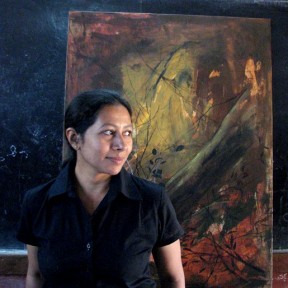
River as a witness. River as a companion. River as a traveller. River as a habitat. As a purveyor of food. Waste. Faith. Goods. Livelihoods. Memory. Artist, film maker and photographer Bhavani GS has been obsessed with the many faces of Cauvery for years now and decided to travel along with the river “to see what happens to the water by the time it reaches Bangalore. ”
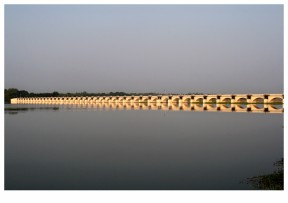
She started this project in November, 2009 and in her recent photography and mixed media show Journey with River Cauvery, Bhavani freeze framed the movement and the stillness of Cauvery. And also captured her own interaction with the river, turning the idea of the artist into art. Says Bhavani, “I am exploring my relationship with the most contested water resource,the river Cauvery and am using my body to navigate through the river till it reaches the Bay of Bengal. The images travel through traditional spaces of worship, contamination, rituals of bathing, washing and other communal activity. ” And through the journey, Bhavani peels off so many layers of the river. Sometimes, it is like a still mirror over a bed of pebbles, spread beneath a bridge, caressing gently a pair of feet, flowing through tangled grass, hurtling past milestones, a canvas painted with boats, a frame for the relics of the past and islands of light. And then there was the mythic sub-text.
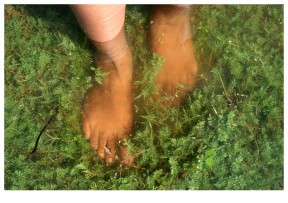
She recalls, “Once I started my journey, it was interesting to know more about the tributaries. The rivers in India are named after women and always refer to mythical origins and are associated with local myths and legends. River Kannika for instance, originates from the other side of Brahmagiri hills. According to a Pauranic story, the river existed before Cauvery and lost her identity as she moved and fused with Cauvery at Bhagamandala. The subterranean river Sujyothi begins and confluences with river Kannika and Cauvery in Bhagamandala. But when the river continues, it is just Cauvery. All these rivers with their tributaries – River Kakkabhe, Harangi, Hemavathi, Laxmantheertha, Kapila, Suvarnavathy, Chikhole, Shimsha, Kanva, Arkavathi of Karnataka- Lokapavani, Bhavani, Noyil and Amaravathy of Tamil Nadu meld into Cauvery and lose their identities. But Cauvery continues her journey as herself.”
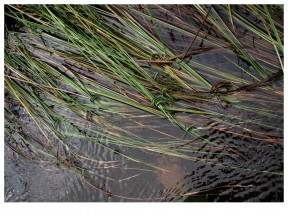
She continues, “My connection to Cauvery water now is through Bangalore city where I live. May be I am more passionate about this river because it’s from my native land Kodagu (Coorg). I was brought up worshipping and adoring this river. So I just went with the flow. During my journey, it was mesmerizing and enchanting to see the flow of her beauty amid forests, mountains, towns and villages. Whatever felt interesting, I recorded. So a narrative video about this journey emerged. In some places I got myself filmed too with the river – it was like taking a picture with a celebrity! But it hurt me to see how the river gets polluted on the way and that some of the tributaries are polluted too. It was painful to see the sand mining happen at such large scale. Again people throwing plastics near the river or in the river is common because people love to picnic around water. This video negotiates the landscape of the river, and it flows through the sacred and secular, private and public domains. The use and control of river waters have been part of the dominant social and political discourses about sharing of waters for irrigation, building dams and harnessing hydro electricity. The visual narrative is a personal journey to question the faith that is passed on to me about the purity of water and its mythical and sacred associations heard from oral narratives.”
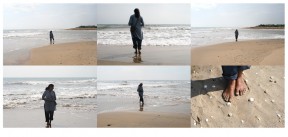
As the journey progressed, Bhavani was fascinated to see that, “the river grow bigger and wider. Every time a tributary joins the river, it grows more wide and powerful . At times she was calm and at times violent and fast moving, brisk, gentle, and graceful..it flowed beyond words, wisdom, controversy, explanation……like an enlightened spirit.” And the journey continues. Both of the artist and the muse.
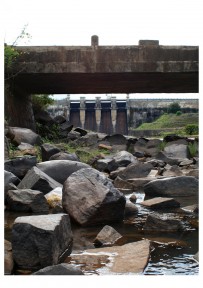
***











